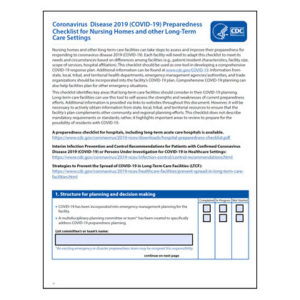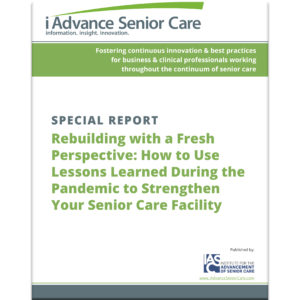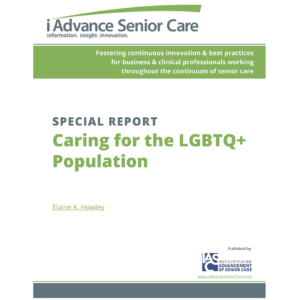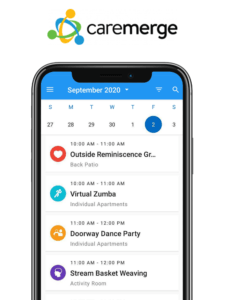Gun Violence and Senior Living
Tips for keeping residents and employees safe from gun violence.
 Last year, gun violence led to tragic outcomes in several senior living facilities across the country.
Last year, gun violence led to tragic outcomes in several senior living facilities across the country.
In August, a husband and wife were shot dead in an apparent murder-suicide in an assisted living facility in California. In October, an 80-year-old man opened fired in the lobby of a senior living facility in Vancouver, Washington, killing one man and injuring two women.
A similar scene played out in Rhode Island in December, when a 66-year-old man who lived at an assisted living complex shot and killed a woman, hurt two others, and then shot and killed himself.
What’s driving this rise in violence, and how can you help keep residents and employees safe?
Gun Ownership
Older adults are more likely to own one of the 265 million guns estimated to be in the U.S. civilian gunstock than younger adults.
According to a 2014 article in the Journal of the American Geriatrics Society, adults aged 65 and over have the highest rate of gun ownership in America. The National Firearms Survey found that more than 25% of people aged 60 and older own guns. That’s a lot of guns in the population that constitutes the primary cohort in most senior living and long-term care facilities.
Because of guns’ prevalence and accessibility, it’s no wonder they are beginning to show up more frequently in senior living facilities.
Technology Can Help

Mike Hudson, senior director of government solutions at ClearForce
Mike Hudson, former Marine Corps leader and senior director of government solutions at ClearForce, a risk management, analytics, and compliance technology company based in Vienna, Virginia, says keeping employees and residents safe begins with identifying problems before they blow up into actual violence. “You need a way to detect red flags.”
When it comes to keeping employee-driven violence from arising, there are some technology tools that can help. For example, ClearForce offers a technology product that helps organizations spot potentially problematic behaviors or complications before they show up in the workplace, such as multiple traffic violations, an arrest for a low-level drug offense or a DUI, or financial issues.
“Workplace violence doesn’t usually start in the workplace. The behavior tends to start away from work,” Hudson explains, so the idea is to “discover employees who potentially could become risks,” before they bring their grievances into the building. Often, there’s an underlying stress, such as an illness in the family or a financial problem, that the employee hasn’t mentioned yet.
Being alerted to symptoms of that stressor can give the employer an opportunity to address the concerning behaviors and work with the employee to resolve whatever is going on. “A lot of people are hesitant to ask for help,” Hudson says, but when approached about an issue, they might really appreciate the support.
Beyond that, though, the technology helps give employers a heads up about potentially problematic behavior before it spills over into violence in the workplace. Being forewarned is forearmed, as the saying goes.
Mental Health and Safety Protocols
In identifying potential issues among residents, that can be a little trickier. Working with a mental health provider who can monitor the status of residents may give you a head start if someone is trending towards violence.
You may also consider establishing a protocol to keep guns away from residents by either prohibiting them from being brought into your facility in the first place, or requiring that they be stored in a central location. For some facilities, this is more than just a policy – it’s now the law.
In October 2019, California passed a new law that requires assisted living communities that allow guns on their premises to centrally store the guns. The guns must be unloaded and locked in a gun safe. The hope is that by adding this safety measure, guns can be kept out of the hands of children who may come into the facility, and residents and employees can also be kept safer.
Drafting a Plan
In addition to looking out for potential problems before they become an active shooter situation, it’s become increasingly clear in recent years that senior care facilities must have a plan in place for how to deal with an active shooter situation if one arises.
Just like you would develop an emergency plan to cope with a fire, flood, or earthquake, you need to have measures in place and a road map for residents and employees to follow in the event that someone uses a gun in your facility.
Hudson recommends having “an outside consultant come in and do an assessment,” if you have the funding for such a project, as this can point out areas of vulnerability that would benefit from shoring up. The consultant can help you build a plan that’s tailor-made for your facility.
Regardless of how big your budget is, one great way to get started is by “engaging with first responders,” Hudson says. This means reaching out to law enforcement personnel, the local fire department, and nearby ambulance companies to establish a relationship with them. Often, these organizations can provide solid advice on how to draft a plan that is in compliance with all local ordinances.
Once you’ve got a plan developed, “test that plan,” Hudson says. “Do some dry runs.” You should look to train your staff and residents on how best to respond. Practice how to walk out of the building. Drill staff on where the safe meeting place is. Assign tasks so that everyone knows what to do and when. “Who’s calling 911?” Hudson asks.
You should also train staff and residents on how to interact with first responders who arrive on scene. “Sometimes it’s hard to tell who’s the bad actor,” Hudson says. “They may be dressed like everyone else,” so practice having staff and residents evacuate the building with hands up in the air to signal they aren’t a threat, or practice getting to the ground in a secure area as quickly as possible.
Once you have a plan drafted, practice it frequently so it becomes second nature. It’s not just good practice, it may soon become the law. H.R. 1309, the Workplace Violence Prevention for Health Care and Social Service Workers Act, has passed the House and will be voted on by the Senate. The bill stipulates health care facilities must “develop and implement a comprehensive plan for protecting health care workers, social service workers, and other personnel from workplace violence. In addition, those employees must:
- Investigate workplace violence incidents, risks, or hazards as soon as practicable;
- provide training and education to employees who may be exposed to workplace violence hazards and risks;
- meet record keeping requirements; and
- prohibit acts of discrimination or retaliation against employees for reporting workplace violence incidents, threats, or concerns.”

Elaine K. Howley is a freelance journalist for various publications. An award-winning writer specializing in health, fitness, sports and history, her work has appeared in numerous print and online publications, including U.S. News, AARP.org, espnW, SWIMMER magazine and Atlas Obscura. She’s also a world-record holding marathon swimmer with a passion for animals and beer. Contact her via her website: elainekhowley.com.
Related Articles
Topics: Administration , Executive Leadership , Featured Articles , Policy , Regulatory Compliance , Risk Management , Staffing











